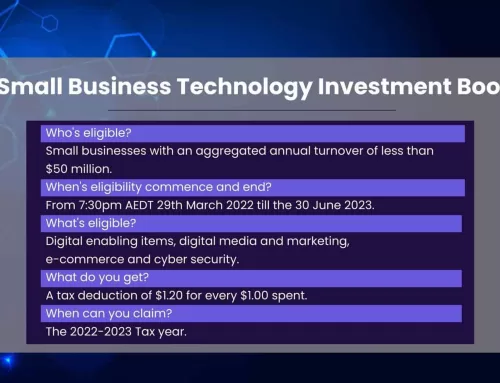A Short History Lesson in Marketing
Marketing has always played a pivotal role in the success of any business. In years past, marketing was confined largely to advertising and promotions strategies. The marketing team worked independently from sales and from the communications and public relations teams. They pottered along, creating marketing plans, doing their own thing and (sometimes) informed the sales, operations, customer service and PR teams what was going on.
Fast forward a few decades and an avalanche of technical advancements, the 4 P’s has blown out to 7 and sometimes C’s and A’s as well. (depending on where you look).
A marketing team now has to wear many, many hats and straddle technology, data analysis, content creation and storytelling. As well as graphic design, videography, business communication and PR.
Technology and data-driven approaches has had a profound impact on the role of marketing by transforming how marketing teams operate, communicate, analyse data, and execute strategies. Simultaneously, the advent of digital and social media marketing has changed how businesses connect with their target audience, promote their products or services, and measure the effectiveness of their marketing efforts.
But wait! there’s more! ESG (Environmental, Social and Governance) strategies now mean that organisations are committed to living and breathing their brands ethos. It’s in everything they do and failure could mean a massive hit their bottom line. The organisations reputation is now inexorably linked to their marketing.
As a marketer I say fantastic! It’s about time! Your marketing objectives SHOULD encompass your business! For me, marketing that encompasses the whole business is a no brainer. It’s something I’m so committed to, I even named my business with that in mind.
Why should a business adopt a holistic marketing approach?
A business that embeds their marketing objectives, plans and strategies into their entire organisation can ensure the organisation:
- Is aware of and committed to the organisations goals and mission.
- Is agile and can adapt quickly to changes in market conditions.
- Is consistent with a cohesive brand image.
- Provides customers with an enhanced and collusive customer experience.
- Ensures improved marketing ROI and more accurate analytics.
- Uses targeted and personalised marketing.
- Aligns the whole team with business objectives, and
- Provides a competitive advantage through all of the above.
What are some ways your marketing objectives can encompass your whole business?
Hiring staff committed to your brand:
When writing a job ad, a position description, even when interviewing potential candidates, your brand and your marketing plans and objectives should be front and centre. Right from the outset, you should be employing people that think like you, are committed to the organisations success and understand the mission. Finance, client service, sales, admin, HR and technology ALL should understand your customer, your brand and what it represents.
Embrace a customer-centric mindset:
Placing the needs and preferences of your customers at the forefront of every decision is crucial. By understanding your target audience and their pain points, you can tailor your operations and customer interactions and point of sale strategies to meet their expectations effectively. You can also gain invaluable market intelligence through any and all points of customer contact.
Break down silos:
Silos within an organisation can hinder the flow of information and impede collaboration between departments. For instance, encouraging cross-functional collaboration through a shared purpose can create channels for open communication and knowledge sharing between marketing, operations, and point of sale teams. In addition, regular meetings and collaborative projects can foster a better understanding of each department’s objectives and facilitate the alignment of strategies. Even an informal “smoko” or coffee break can let teams swap stories and develop inter departmental connections that can be instrumental in reducing bottlenecks, and creating effective process flows between teams.
Develop a unified brand message:
Consistency in branding is crucial for successful marketing integration. Your brand message should be consistent across all customer touchpoints, including advertising, operations, and the point of sale. With that in mind, ensure that everyone in your organisation understands and embodies the brand values, mission, and voice. As a result, this consistency will enhance customer trust and loyalty, reinforcing a positive brand image.
Incorporate marketing into operations:
Marketing should not only focus on promoting products or services but also on optimising operational processes. Work closely with your operations team to identify areas where marketing can add value. For example, marketing insights can help streamline supply chain processes, improve inventory management, or enhance customer service. By integrating marketing into operations, you can create a more efficient and customer-oriented business model.
Enhance the point of sale experience:
The point of sale is a critical touchpoint where marketing can make a significant impact. Ensure that your marketing strategies are seamlessly integrated into the customer’s purchasing journey. This can include targeted offers, loyalty programs, upselling and cross-selling techniques, and a user-friendly check out and return policy. By aligning marketing efforts with the point of sale, you can create a cohesive experience that drives customer satisfaction and encourages repeat business.
Leverage company wide data and analytics:
Data and analytics are invaluable tools for integrating marketing into various business functions. For example, collecting and analysing customer data, not just who buys, but also where they come from, which channels they used to get there, who are more likely to complain, return or default on their payments. This type of 360 degree insight can provide you with amazing intel into their preferences, behaviors, and buying patterns. This information can then be utilised to refine marketing strategies, develop three dimensional target market personas, optimise operations, and enhance the point of sale experience. By leveraging data-driven insights from all over the organisation, you can make informed decisions that continually improve the overall customer journey and also helps you find your perfect customer.
In today’s agile and ever changing business landscape, it is no longer acceptable for marketing to be considered a standalone function. Your marketing objectives should encompass your business. In other words, marketing must bleed through the entire organisation. By employing the above measures, businesses can create a holistic and seamless customer journey and usher in an era of sustained growth, brand loyalty, customer satisfaction, and competitive advantage in today’s highly competitive marketplace.







Keep In Touch